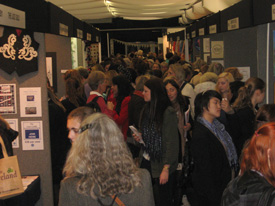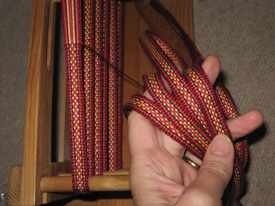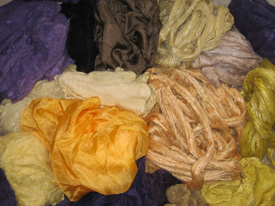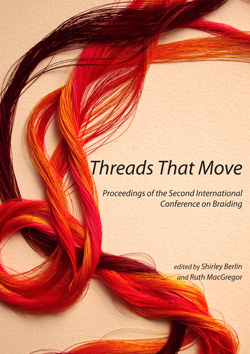The archives
Return to the
Archive directory
Return to the
Now spinning
page
Summer and Fall 2012
29 October 2012
A musical interlude

As the years go by, I find I have an ever-growing appreciation for really cool women who are older than I am (or maybe I should wink toward my younger friends and say "even older than I am").
I admire these women. They inspire me. They always have, but now I can feel that inspiration in my bones. I am grateful for what they do, and the grace with which they do it.
The woman responsible for today's musical interlude is a case in point. No explanation is needed. Watch, enjoy, contemplate, and do the right thing. With grace.
It's the Knitting and Stitching Show season -- and the first show was well attended, as you can see (click on the photo for a bigger view). This was the show in London, in the incomparable Alexandra Palace. It was marvellous.
As you look at this picture, keep in mind that I have the chance to take pictures only when there's a "lull". We were busy, indeed.
The Knitting and Stitching shows dominate autumn for me and my friends in the Braidmakers' Workshop. When we're at a show, we are actively teaching, talking, demonstrating and luring as many as we can onto the lovely slippery slope of braiding (and weaving, and cord-making, and small knitting). At the shows in Dublin and Harrogate, we teach classes as well as all the talking, teaching and so on in our booth.
When we're not at a show, we're getting ready for the next one.
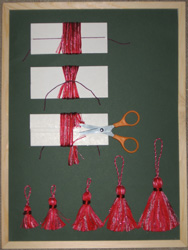
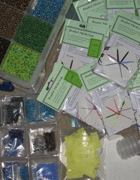
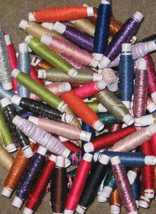
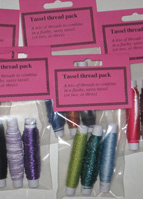
Next stop: Dublin. After that: Harrogate.
And then it will be winter.
In my own defense, let me make it clear that weaving this red band really was related to unpacking the suitcase -- so it's not really that I'm being distracted from things I'm supposed to be doing. (Much.)
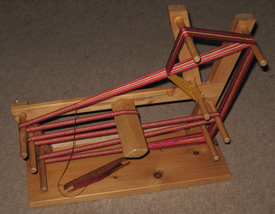
An inkle loom followed me home from the braiding conference. It's a "Shirley" inkle loom, created quite a few years ago by my friend Shirley Berlin. This particular loom is one of the older Shirley looms still in existence (this one was probably made around 1985), so I think of it as an "Early Shirley".
One can't leave a loom naked -- so of course I had to warp it. And then when I got home and unpacked it, it looked so happy in its new surroundings that I had to weave off its band. (The reds are quite rich, aren't they? There are variegated yarns in there, too -- click the image for a larger view.)
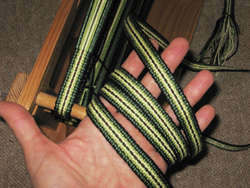
And then, of course, one can't leave a loom naked (and so on, and so on). After two bands of red, we shifted into the greens. And heaven help me, I'm on the second green band and am already thinking of what's next!
This loom is compact, the perfect size for weaving in the lap (!), but despite its small size, it weaves a band a full 2 meters long. And it does so very comfortably!
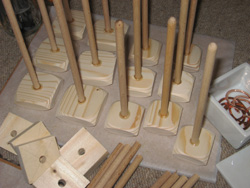
I'm hopelessly hooked.
The suitcase still isn't quite empty; but that will come. As it waits, even as the weaving progresses (really, I can't help it!), I'm also doing things I'm supposed to do (right). The spindles in this photo no longer look like this -- they're now virtually finished, awaiting only their final balance and wax.
Next up: another batch of spindles. After that: a batch of heddles. After that: a few documents are calling my name rather insistently.
In the background through it all, the dyepot softly burbles. Silk, silk, silk.
It's nice to be home!
In the weeks before the braiding conference, things were happening.
I'd been asked to give a series of dyeing workshops in England: four workshops in four different cities, one right after the other. The workshop was a two-day introduction to dyeing, with the first day focussed on synthetic dyes and the second exploring natural dyes.
Many things go into preparing for workshops. There are handouts, of course, and reading lists, and organizational notes. There are supplies, equipment, special protective gear, drop cloths, fibres; and there's almost always some last-minute research of the hands-on kind, just to make sure everything will work as it should. In this particular case, I needed to increase my stash of dyestuffs (oh darn!) -- and because the dyestuffs came from suppliers I hadn't used before, I spent a week or so in accelerated dye mode, testing the viability and potency of the new materials. ...It was fun. :-)
The jumble of fibre in the photo above shows some of the results. All fibres in the photo are silk: hankies, caps, tussah top, scarves -- all sorts and qualities of the stuff. I dyed so much that I was forced to replenish my personal stash of silks when it was over (oh drat!).
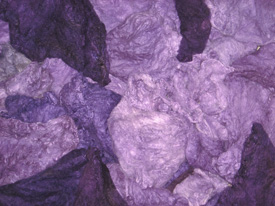
The big surprise in this flurry of dye activity was Logwood, which I'd read about for years, but which I'd never before used. I made a dyebath with 50g of the wood, figuring that would be enough to dye one batch with strong colour, then another with medium -- but that dyepot ran all day long and still had plenty of pigment in it at the end of it all! (In fact, I ran out of silk to dye before the dyebath ran out of potency.)
Using our local tapwater, and with alum as the sole mordant, logwood gave a range of lovely purples (right -- click to see a larger version). The first batch of fibre in the bath took deep colour almost immediately: a purple so intense that it's nearly black. Much to my surprise, the second batch had nearly the same intensity. As the dyebath gradually weakened, the colour shifted to a lovely, rich lilac -- and stayed there literally for hours, delivering batch after batch after batch of beautiful fibre.
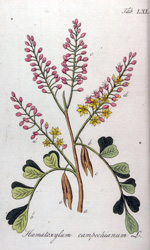
Logwood's Latin name is Haematoxylum campechianum. It is the wood of flowering tree in the Legume family native to Mexico and Central America. Logwood has been known and used as a dyestuff for centuries. The modern country of Belize has its foundations in the 17th century when English settlers arrived expressly to harvest and export logwood trees.
Here in France, Logwood was classed by Colbert as one of "les grands teints". A relatively small amount of wood can give strong, fast colour to a surprising amount of fibre (50g of wood can easily dye 500g of fibre!), and it's one excellent way of obtaining deep, near-black hues without recourse to extra steps in the dyeing. It is still used commercially in our modern world for histology and staining, and its leaves and bark serve in some medicinal applications.
In my workshops, we used the local tapwater -- and the logwood dyepot was one of those which showed the greatest variation from locale to locale. In some areas, the dyepot yielded a deep grey with purply overtones. In others, we got a range of purple that resembled the results I got here in my test batch.
Now that I'm back at home, I find I have a lot to spin! Happy, happy spinner.
Something amazing dominated the first eight months of my year.
What you see here (left) is the cover of a 160-page book that contains the words, perspectives, techniques and inspirations of 23 remarkable people. The book has a wide focus: archaeological textiles, Chinese braid embroidery and traditional Japanese kumihimo -- but also loop-manipulation braiding, inkle weaving, North American quillwork, jewelry, tablet weaving, sprang, fingerweaving, patterning with rigid heddles, ply splitting and bobbin lace.
It's an amazing book. It was an honour to work on it.
The book is the Proceedings of Braids2012, the second international conference on braiding, which took place last month in Manchester, England.
It's difficult to portray a conference accurately, especially a successful one. A description of its structure can give tutor names and titles of workshops, but the larger picture needs to show the quiet growth and blossoming of a sense of community. We started the week as a group of people interested in narrow wares, coming from all parts of the globe -- and we ended the week with real friendships and unexpected new skills. Techniques literally passed from hand to hand. It was marvellous.
Some of you have already written to ask if the book is available for purchase, and the answer is Yes! It was published by the Braid Society, and you can find ordering details on the Society's website, or you can simply send an e-mail to booksales "at" braidsociety.com. Lest anyone get the wrong idea about who makes a profit, all funds from this book go to the Braid Society. Our work as editors was on a completely volunteer basis (and happily, too -- we got to read these amazing articles before anyone else!).
For most of the conference, I was so busy absorbing sights and sounds and information that I forgot to take pictures -- but my camera came out to join the fun in the evenings. Here's a sampling.

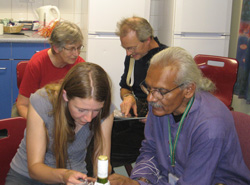
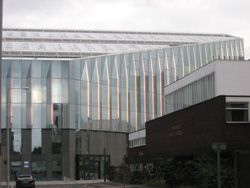
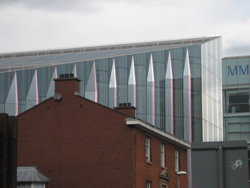
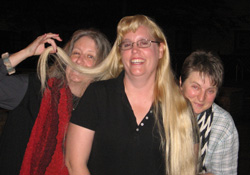
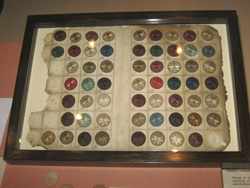
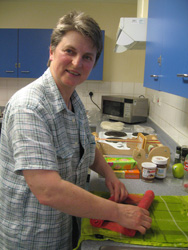
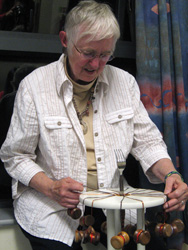
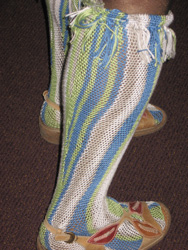
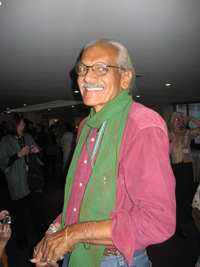
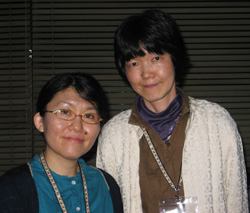
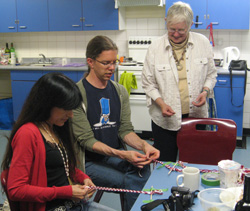
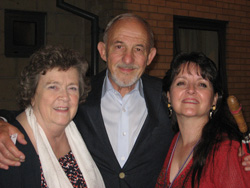
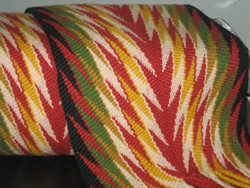
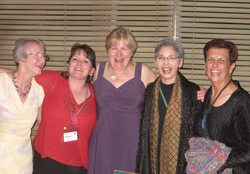
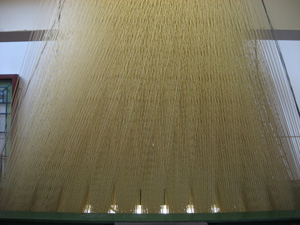
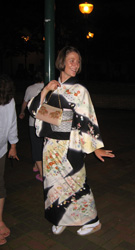
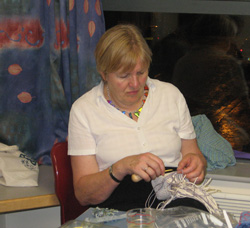
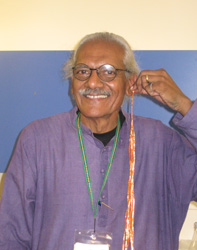
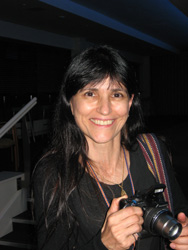
Return to the Archive directory page
Return to the Now spinning page
